Benoist Laius
Spanish playing cards such as these were used in those parts of France where certain games were enjoyed, such as Aluette.
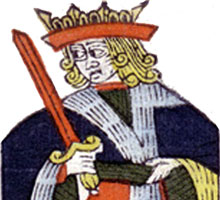
Spanish National Pattern made in South France, early 18th century
Benoist Laius is believed to have worked in Montpellier between 1706 - 1738. Montpellier is located on the south coast of France on the Mediterranean Sea. The pack could possibly have been carried to Spain by French troops supporting Felipe V in Barcelona in 1714.
Spanish playing cards like these were used in those parts of France where certain games were enjoyed, such as Aluette.

Above: cards from a 48-card deck in the 'Spanish National' pattern, manufactured by Benoist Laius, Montpellier (France), sometime between 1706-1725. The maker's name or initials appears on several cards. Woodblock and stencil printing technology. There are no 'pintas' or breaks in the framelines to denote the suits, as is usual in Spanish playing cards. The backs are plain white.
There is no Bourbon escutcheon on the Spanish arms on the Ace of Coins (the first Bourbon King in Spain was 1700). Possibly the woodblocks were out-of-date, or the woodcutters supplied unnamed blocks so that the new owner could print their own name or initials in the empty spaces. The Sota of Coins holds a horn in his right hand. Almost identical packs were being produced by other makers, such as Jacques Sellon, Marseille, c.1710 or J. Coissieux, Romans in c.1725.
REFERENCES
Mann, Sylvia: All Cards on the Table, Jonas Verlag/Deutsches Spielkarten-Museum, Leinfelden-Echterdingen, 1990
By Simon Wintle
Spain • Member since February 01, 1996 • Contact
I am the founder of The World of Playing Cards (est. 1996), a website dedicated to the history, artistry and cultural significance of playing cards and tarot. Over the years I have researched various areas of the subject, acquired and traded collections and contributed as a committee member of the IPCS and graphics editor of The Playing-Card journal. Having lived in Chile, England, Wales, and now Spain, these experiences have shaped my work and passion for playing cards. Amongst my achievements is producing a limited-edition replica of a 17th-century English pack using woodblocks and stencils—a labour of love. Today, the World of Playing Cards is a global collaborative project, with my son Adam serving as the technical driving force behind its development. His innovative efforts have helped shape the site into the thriving hub it is today. You are warmly invited to become a contributor and share your enthusiasm.

Leave a Reply
Your Name
Just nowRelated Articles

Spanish pattern by Eugène Boisse
Spanish pattern published by Eugène Boisse, Bordeaux.
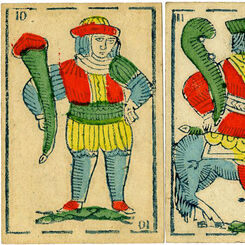
P. Buscaglia: Spanish-suited cards
Spanish-suited cards published by P. Buscaglia, Mele & Genova.
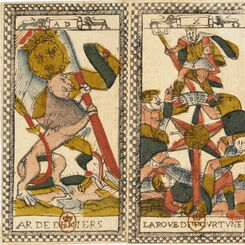
The Parisian Tarot
The “Parisian Tarot”, early 1600s, with imagery and design synthesizing several influences.
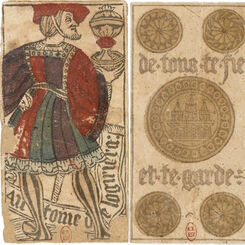
Antoine de Logiriera
Archaic Spanish-suited playing cards published in Toulouse by Antoine de Logiriera (1495-1518).
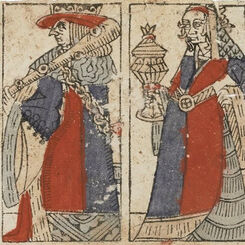
J. Deluy c.1490s
Archaic Spanish-suited cards produced by J. Deluy c.1490s.

Hermanos Solesio
“Money Bag” pattern by Hermanos Solesi, late 18th c.
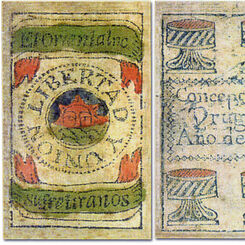
Naipes Artiguistas, 1816
Naipes Artiguistas published in Concepción del Uruguay, Entre Rios province (Argentina) in 1816, by ...
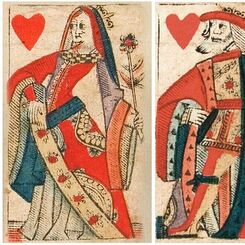
Pierre Marechal
Rouen became an important centre for card-making whose influence extended far afield. Cards from Rou...

Lyon Pattern type iii
This pattern was used in various parts of eastern France but was ultimately replaced by the official...

Cartes Catalanes
Cartes Catalanes are used in a small area in the Eastern Pyrenees region of Southern France.

Agostino Bergallo
Agostino Bergallo Spanish pattern made for South American countries

Giuseppe Cattino
Playing cards manufactured in Italy by Giuseppe Cattino and Paolo Montanar for Spanish markets.

Pedro Bosio
Cards of the Spanish National Pattern 'Money Bag' type manufactured by Pedro Bosio, Genova (Italy) ...

Paris Pattern
The Paris pattern was established as such around the middle of the seventeenth century (based, perha...
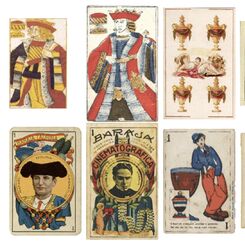
Spanish Playing Cards ~ La Baraja Española
Spain has played a pivotal role in the history of playing cards in Europe and Latin America.

History of Court Cards
The court cards in English packs of playing cards derive from models produced by Pierre Marechal in ...
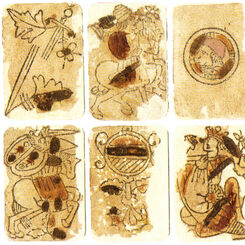
Baraja Morisca — Early XV century playing cards
Primitive Latin suited pack, dated by paper analysis as early XV century, which makes this one of th...
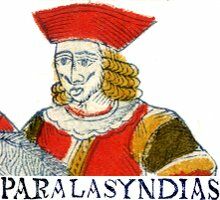
Real Fábrica de Macharaviaya
This is the official Spanish National pattern of the 18th century. Design and production was control...

Moroccan pattern by Camoin & Cie.
Spanish Moroccan pattern by J.B. Camoin and A. Camoin & Cie, Casablanca & Marseille.
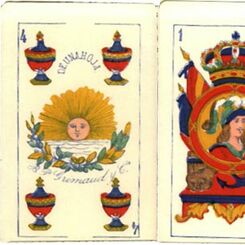
Grimaud Spanish pattern
Grimaud Spanish pattern, c.1880
Most Popular
Our top articles from the past 60 days


 Your comment here. Your comment here. Your comment here. Your comment here. Your comment here. Your comment here. Your comment here. Your comment here. Your comment here. Your comment here. Your comment here. Your comment here. Your comment here. Your comment here. Your comment here. Your comment here. Your comment here. Your comment here. Your comment here. Your comment here. Your comment here. Your comment here. Your comment here. Your comment here. Your comment here. Your comment here. Your comment here. Your comment here. Your comment here. Your comment here. Your comment here. Your comment here.
Your comment here. Your comment here. Your comment here. Your comment here. Your comment here. Your comment here. Your comment here. Your comment here. Your comment here. Your comment here. Your comment here. Your comment here. Your comment here. Your comment here. Your comment here. Your comment here. Your comment here. Your comment here. Your comment here. Your comment here. Your comment here. Your comment here. Your comment here. Your comment here. Your comment here. Your comment here. Your comment here. Your comment here. Your comment here. Your comment here. Your comment here. Your comment here.




















